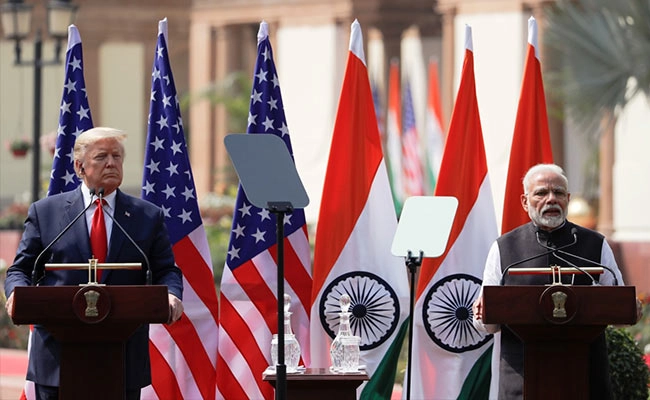In a significant escalation of trade tensions, former President Donald Trump has announced plans to impose additional tariffs on India, just days after the country doubled its tariffs on various U.S. goods. This tit-for-tat exchange highlights the ongoing complexities in U.S.-India trade relations, which have been marred by disputes over tariffs and trade barriers. Trump’s latest threats come amid increasing pressure to protect American industries and jobs, a cornerstone of his administration’s economic policy. The former president’s declaration has sent ripples through markets and raised concerns among businesses that rely on trade between the two nations.
India’s decision to double tariffs on a range of American products, including agricultural goods and certain electronics, was seen as a retaliatory measure against previous U.S. tariffs that had affected Indian exports. This move not only complicates the economic relationship but also affects consumers and businesses in both countries. As each nation seeks to assert its trade interests, the potential for a broader trade conflict looms large. The prospect of additional tariffs from Trump could exacerbate this situation, leading to higher prices for consumers and impacting the competitiveness of industries reliant on imports.
The implications of these developments extend beyond mere financial metrics; they touch upon diplomatic relations and strategic partnerships between the two nations. Historically, the U.S. and India have maintained a cooperative stance, particularly in areas like defense and technology. However, as economic disputes surface, they threaten to overshadow collaborative efforts. Analysts warn that a prolonged trade war could hinder not only bilateral relations but also global economic stability, given the significant roles both countries play in the international market.
As the situation continues to evolve, stakeholders on both sides are urged to engage in dialogue to mitigate the impact of these tariffs. Business leaders, policymakers, and trade representatives must work together to find a resolution that addresses the concerns of both nations, preserving the economic benefits of trade while ensuring fair practices. The coming weeks will be critical as each side navigates the complexities of their trade relationship, weighing the political implications against the economic realities that affect millions of lives.




